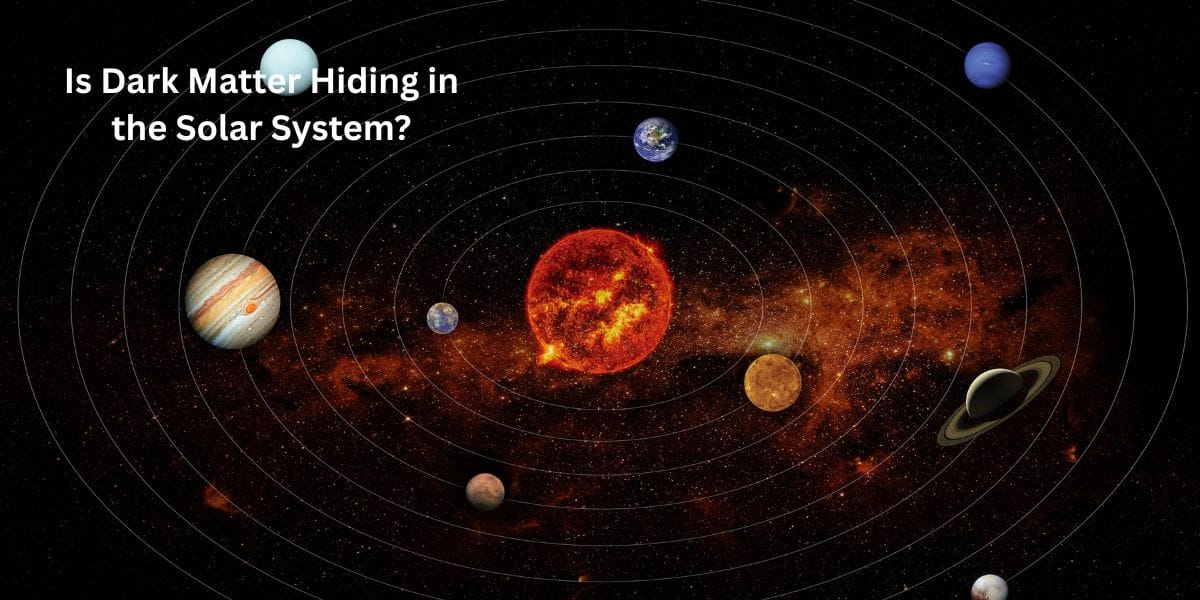Have you ever looked up at the night sky and wondered what’s really out there? We see stars, planets, and moons, but scientists say there’s something invisible too—something called dark matter. It doesn’t shine, reflect light, or glow, yet it’s everywhere in space.
Dark matter is mysterious because we can’t see it, but we know it exists because of its gravity. It pulls on stars and galaxies, changing how they move. Scientists think dark matter makes up about 27% of the universe, while normal matter (like planets and stars) is only about 5%. That means most of the universe is made of stuff we can’t even see!
But here’s a big question: Could dark matter be hiding right here in our solar system?
What Is Dark Matter?
Dark matter is an invisible type of matter that doesn’t interact with light. It doesn’t glow like stars or reflect light like planets. The only way we know it exists is because of its gravitational pull.
Think of it like the wind—you can’t see it, but you can feel its effects. Dark matter works the same way. Scientists study how galaxies spin and how light bends in space to detect its presence.
Fun Facts About Dark Matter:
- It doesn’t emit, absorb, or reflect light.
- It’s not the same as black holes or antimatter.
- Without dark matter, galaxies would fly apart!
Could Dark Matter Be in Our Solar System?
Yes, it’s possible! Scientists believe dark matter is everywhere in the universe, including our solar system. But because it doesn’t interact with normal matter much, it’s very hard to detect.
Some researchers think tiny amounts of dark matter might be floating between planets. Others suggest it could be trapped inside planets like Earth or Jupiter. However, we don’t have direct proof yet.
Why Haven’t We Found It Yet?
- Dark matter particles (if they exist) are very light and pass through normal matter easily.
- Our detectors aren’t sensitive enough to catch them yet.
- The amount of dark matter in our solar system might be too small to measure.
How Do Scientists Search for Dark Matter?
Scientists use special tools and experiments to hunt for dark matter. Here are some ways they look for it:
Underground Detectors
Deep inside mines or mountains, scientists place sensitive machines to catch dark matter particles. These detectors wait for a rare collision between dark matter and normal atoms.
Space Telescopes
Telescopes like Hubble and James Webb study how dark matter bends light from distant galaxies. This helps map where dark matter is hiding.
Particle Colliders
Machines like the Large Hadron Collider (LHC) smash particles together at high speeds. Scientists hope to create dark matter in these collisions.
What If We Find Dark Matter in the Solar System?
If dark matter is really in our solar system, it could help us understand:
- How planets move – Dark matter’s gravity might slightly change their orbits.
- The future of space travel – If we learn to detect it, we might use it for new technology.
- The secrets of the universe – Solving the dark matter mystery could explain how galaxies form.
The Big Mystery Remains
Dark matter is one of the biggest puzzles in science. We know it’s out there, but we still don’t know exactly what it is or where it hides. Could it be floating silently in our solar system? Maybe!
Scientists keep searching, and every new discovery brings us closer to the truth. One day, we might finally uncover the secrets of dark matter—and it could change everything we know about space.
📌 Frequently Asked Questions
Can dark matter be on Earth?
Yes, scientists think tiny amounts of dark matter could pass through Earth every second. But it doesn’t interact with normal matter, so we don’t feel it.
Does dark matter affect humans?
No, dark matter doesn’t interact with our bodies. It passes through us without any effect.
Is dark matter dangerous?
No, it doesn’t harm anything because it doesn’t react with normal matter.
Can we see dark matter?
No, dark matter is invisible. We only know it exists because of its gravity.
What is dark matter made of?
Scientists don’t know yet. It could be made of unknown particles that don’t interact with light.
How was dark matter discovered?
Astronomer Fritz Zwicky first noticed it in the 1930s when he saw galaxies moving strangely.
Could dark matter be black holes?
No, dark matter is different. Black holes are made of normal matter but are very dense.
Will we ever find dark matter?
Maybe! Scientists are building better detectors and telescopes to solve the mystery.
Does dark matter make up most of the universe?
Yes! About 27% of the universe is dark matter, while normal matter is only 5%.
Could dark matter explain missing mass in the solar system?
Some scientists think so. It might help explain why some objects move in unexpected ways.

You Might Also Like
Is Dark Matter on Earth?
Coldest Place in the Solar System: Where and Why?
What Are the New Discoveries of Pluto?
2025’s Solar Storm Warning: Is Earth Ready?